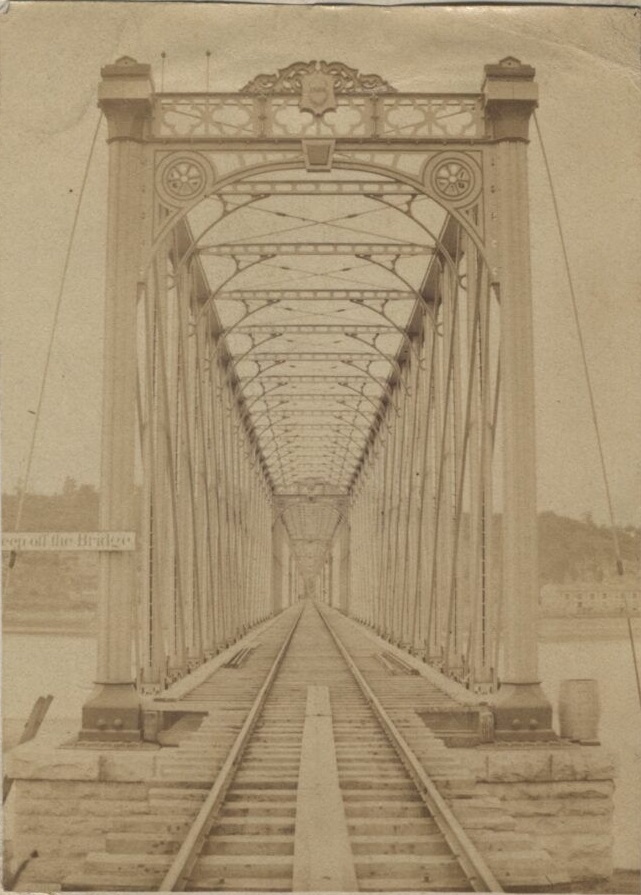Located between the cities of Dubuque, Iowa and East Dubuque, Illinois, this large through truss bridge crosses the Mississippi River.
The first bridge here was built between 1868 and 1872, and consisted of a much larger structure. Several portions of this bridge, particularly the approach, were reused in Dubuque County and other areas as the approach was filled.
Four 1872 approach spans are still known to exist, located at Bergfeld Pond, Sageville, Iowa and Vicksburg, Mississippi, as part of a two span bridge carrying Fairground Street over a rail yard.

Historic photo of the previous bridge
The current bridge at this location was built in two stages. The swing span was built in 1892, and consists of a pair of 7-panel, pin connected Pratt Through Truss leafs, built by Keystone Bridge Company.
The rest of the bridge was added in 1899. The remainder of the bridge consists of three 9-panel pin connected Parker Through Trusses on the west end, with an additional 10-panel span before the swing span. The east approach of the bridge also contains a 10-panel Parker span. The entire bridge sits on concrete and stone substructures, which date to 1892 and 1899, respectively. No portions of the original bridge were used at this location.
Because this bridge is critical to operations of Canadian National, it underwent an extensive reconstruction in 2012 and 2013. As part of the repairs, members and connections were strengthened with new high strength bolts and steel.
The method of repair to the bridge did not diminish the historic significance. While the appearance was changed by the new riveted connections and brown members, the original connections and members are still visible. The repairs superimposed new over old, allowing for a maximum amount of historic material to remain.
Currently, the bridge is operated by Canadian National. At the east end of the bridge, the railroad enters the tunnel, which makes a sharp turn to head south.
At one time, Chicago Great Western also used this bridge. However, CGW successor Chicago & North Western relinquished the trackage rights in the 1980s, after abandoning the route.
Overall, the bridge appears to be healthy and in good condition. With the significant upgrade, the bridge should continue to serve traffic for years to come.

Historic postcard of the bridge. Photo credit of PhotoLibrarian on Flickr
The author has ranked this bridge as being highly significant, due to the large scale design. In addition, the repair techniques used on this bridge are applauded by the author, as they retained a significant amount of historic material.
The photo above is an overview. the photo below shows the extensive repairs.
| Upstream | Marquette Pontoon Bridge |
| Downstream | Sabula Rail Bridge |
